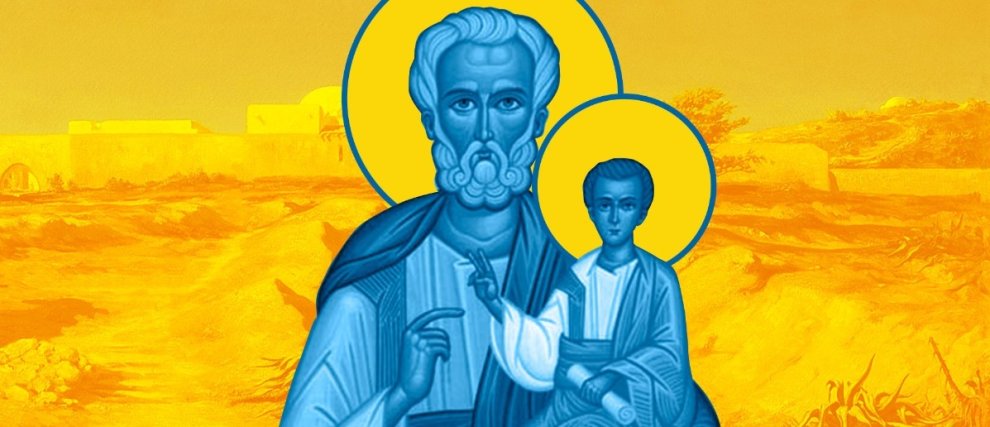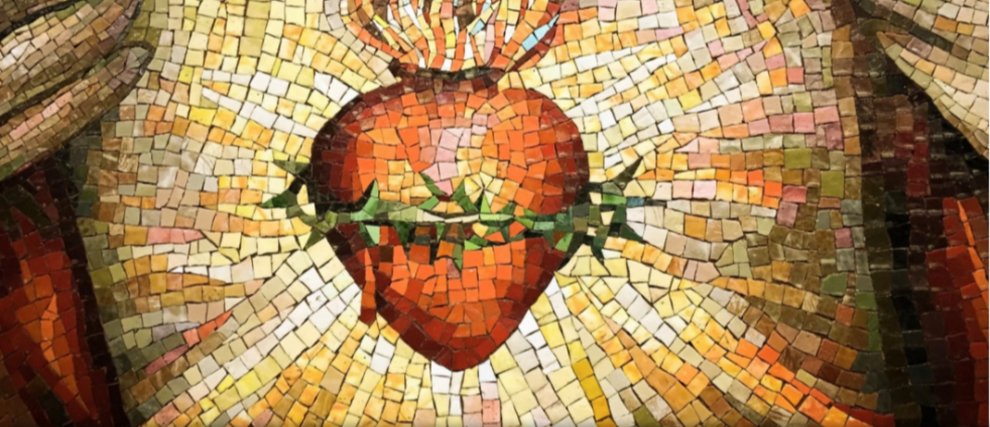Saint Ignatius
Biography of Ignatius of Loyola
Ignatius of Loyola was born in the Basque Country in 1491 to a noble family in the province of Guipuzcoa. Orphaned by his mother at the age of seven, he developed a strong relationship with his father, who educated him until he was fifteen, when his father died in turn. In 1506, he was put in the service of the court of King Ferdinand of Aragon, known as The Catholic, as the page of the royal treasurer Don Juan Velasquez; he led a worldly life there during his young years. At the end of Ferdinand's reign, Ignatius left the royal court and pursued a military career in the service of the court of the Vice King of Navarre.
During the siege of Pamplona, Ignatius fought the armies of Francis I. A cannonball seriously wounded him, which meant he had to stay in bed for many long months. As he recovered, little by little, he immersed himself in reading religious texts. Then, his conversion of heart began. Ignatius was inspired, and decided to completely change his path and to walk in the Lord's way. He left his family home, in which he was recovering, and went on a pilgrimage to the holy land. On the way, he symbolically abandoned his military clothes, which he laid in front of a statue of the virgin. He wore a humble habit and continued on his way, but had to stop because of his poor health. He spent several months in a cave, where he probably began writing his diary and his “spiritual exercises”.
Before arriving in Jerusalem, Ignatius made several stops, mainly in Italy, and in particular in Rome, to receive the blessing of Pope Adrian VI. His stay in Jerusalem was short, and he returned after a month with an ardent desire to begin his studies. He began his academic career in Spain in 1526 in the prestigious University of Alcalá de Henares, but the Inquisition pushed him back to Paris. During the seven years that Saint Ignatius spent in the French capital, he developed deep and sincere friendships with other university students, all from different places and regions: Pierre Favre, Diego Laynez, François Xavier, etc. This is the beginning of the Society of Jesus. The great charisma of Saint Ignatius inspired and touched his friends, who would all pronounce their monastic vows together and plan to go to the Holy Land. Ignatius first went to Venice in 1537, where he was ordained a priest, and waited for his friends to join him; finally, together, the companions had to halt their plans because of the war. They then left for Rome to put themselves at the service of Pope Paul III.
En route, the companions rested in a small chapel at the Virgin Mary (today called visione di sant'Ignazio), ruined by the war. Suddenly, Ignatius had a vision in which Jesus, carrying the cross, revealed himself, saying to him: “Come to Rome, I will be there with you.” The companions arrived in a capital divided by war and Protestant reform. Pope Paul III saw in the Society of Jesus a great opportunity to bring the world back to Catholic precepts, a counter-reform. He gave the order to the companions to officially found their order, as well as to write its constitution. Saint Ignatius was unanimously elected superior general of the Society of Jesus in 1540. In the years that followed, and long after his death, the Jesuit Order would continue to develop. Today, the Jesuit Order has nearly 19,000 members throughout the world.
Saint Ignatius of Loyola died in Rome in 1556. He was canonized in 1622 by Pope Gregory XV. A few years later, in 1626, the construction of the church of Saint Ignatius of Loyola began in the city of Rome, a large Jesuit building, is remarkable for its optical illusion on the ceiling, painted by the Jesuit priest and Baroque painter Andrea Pozzo. Saint Ignatius is celebrated on July 31.
Spiritual Exercises of Saint Ignatius of Loyola
“Exercises are certainly all that I can conceive, know and understand best in this life, both for the personal advancement of a man and for the fruits, help and benefit that he can provide to many others.” - Saint Ignatius of Loyola
Saint Ignatius of Loyola is known for having founded the Society of Jesus, but also for having developed his spiritual exercises, which he had begun to write during his long months of asceticism on the road to the Holy Land.
In Ignatian spirituality, spiritual exercises are in fact a 30-day retreat, during which the person praying goes to the Lord through a set of prayers and meditations. The exercises encourage discernment, and they are organized in four weeks, where there are times of contemplation and meditation on the Passion of Christ, with advice to accept the love of God and follow in the footsteps of his son Jesus Christ. Pilgrims are accompanied by a guide. They themselves have a manual to best fulfill their role during these thirty days. The spiritual exercises of Saint Ignatius are an integral part of life within the Jesuit Order: they are carried out during the novitiate of the new members of the Order, and before the solemn vows are pronounced.
The exercises of Saint Ignatius are also accessible to all Christians. The practice is also strongly recommended by Pope Francis, declaring in 2014:
“Spiritual Exercises should be practiced more, supported and valued, for the men and women of today need to meet God. To propose these Spiritual Exercises is to invite one to experience God, his love, his beauty. Those who live in an authentic way are attracted to God and emerge transfigured. When they resume their ordinary life, their ministry, their daily relations, they carry with them the perfume of Christ." (March 2014).
Learn more about Saint Ignatius of Loyola and the work of the Society of Jesus on the official website of the Jesuits.
The Birth of the Jesuits
The Society of Jesus: Cradle of the Jesuit Order
Thus, Ignatius of Loyola and his companions were at the origin of the Society of Jesus, whose members we know as Jesuits. In addition to being a strategic aid to Pope Paul III facing a divided Rome, the Society of Jesus was also a profound spiritual revolution.
At the dawn of the creation of the Order, Saint Ignatius was already considered by his companions as a charismatic force: they made him the superior general of the Society of Jesus, although he had not really expressed a desire to fulfill this role. A rather revolutionary part of the Jesuit Order, influenced by the experience of Saint Ignatius, is the emphasis on the importance of a thorough academic education preparing for life in a monastery: here, the spiritual exercises of Saint Ignatius take on all their importance, because it is indeed a question of learning discernment through meditations and sessions of framed reflections. The Jesuits then extended their influence by teaching in European universities and schools. Their growing popularity contributed greatly to a revival of fervor for the Catholic religion, long after the death of Saint Ignatius.
The great influence of the Jesuit Order began with the departure of the first missionaries in Europe and throughout the world to build, evangelize and educate. They found great success in Latin America, especially among the indigenous peoples. In China, Jesuits are contributed to a renewed interest in science through the dissemination of books and academic materials from the West.
However, in a context of war and a race for territorial expansion, the Society of Jesus and its missionaries became an increasingly controversial subject. In Latin America, the Jesuits protected the indigenous populations from the Portuguese and Spanish colonizers. In Japan, their growing influence on peasant peoples began to worry senior leaders. Numerous events followed, during which the Jesuits had to confront the political reality of the context in which they operated: in Latin America, as in China, Japan, or the rest of the world, strong repressions took place that heavily affected the mission of the Society of Jesus. Finally, the Society of Jesus was abolished in 1773 by decree of Pope XIV.
In 1814 Pope Pius VII called off this suppression, and the Jesuit Order continued to grow in the following centuries, with the founding of many universities in the United States.
Learn more about the influence and mission of the Jesuit Order here today.

